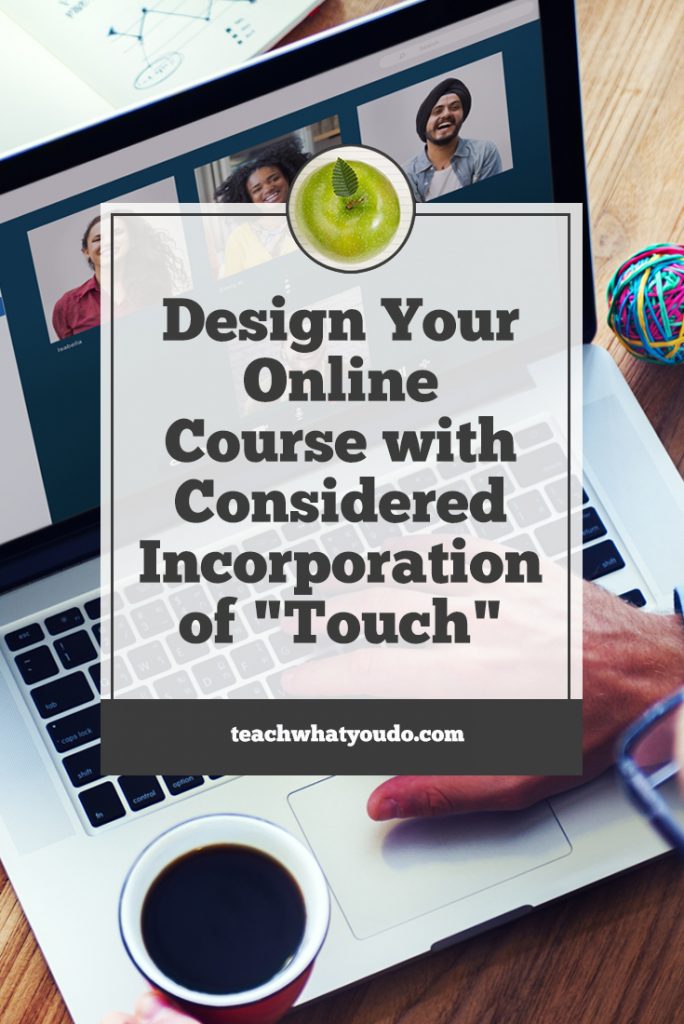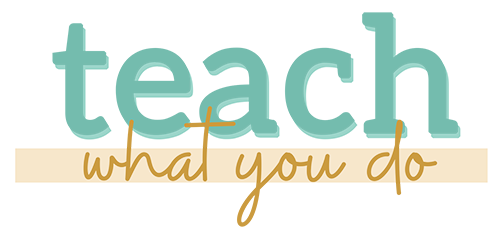 “Touch” is an aspect of your online course, and it refers to how much you interact with and personally support your students.
“Touch” is an aspect of your online course, and it refers to how much you interact with and personally support your students.
Touch a way to distinguish your class from others in the market, and it's an aspect that can be used to ensure and increase student success with the course.
Think of touch as existing on a continuum
Don't think about the touch you provide your students as binary; i.e., it's not on or off, it's not present or absent. Rather, think of touch as existing on a continuum from none to a whole lot. What's more, the amount of touch you provide to a student may vary as he or she moves through the lessons in your class. There will be points at which they need more or less support.
Use touch to create alternate product offerings (and, thereby, price anchoring)
You can offer differing levels of touch on your sales page to create differently priced packages of your class.
For example, you could sell a version of the class that includes community and group coaching sessions at one price. Then sell another, higher-priced option, that includes community, group coaching, AND one-on-one coaching.
When you do this, you give highly motivated students another option for getting to their goal, and you have a way to provide price “anchoring” on the sales page. By anchoring, I mean that students can now compare the class price against something else: the other option. When an option looks like a great deal, your customer is more likely to make a purchase.
How to incorporate touch into your online course
Here are four “venues” in which you can add touch into your online course. They start with lesser amounts of touch (#1 via email broadcasts) and move to increasingly hands-on approaches (#4 one-to-one support):
1. Email broadcasts that anticipate student needs and challenges and provide writing coaching.
With any course you teach, you should have a series of emails that deliver and announce the lessons and the progress your students should be making. Use these emails to do more than say: HERE IT IS! Instead, understand where they should be in their work. Understand what challenges might be keeping them from moving forward. Use the email broadcasts that go out to all students to provide coaching and resources to move them forward.
2. Online “chatting” communities (i.e., Facebook group or bulletin board, also known as a “forum”)
Offering a Facebook group or bulletin board/forum to your students, gives them a way to share, ask questions, and communicate with each other and the teacher at their convenience.
Be sure to figure out how often and even when you'll be available in the community. You can also incorporate regular community prompts, questions, or summaries to keep people coming by and interacting.
As your students move through the class, their knowledge will grow, and they'll become great resources for supporting new students. This community will also become a source for you, as the teacher, to better understand needs that aren't being met so that you can continue to refine and improve your online class.
3. Scheduled live streams or webcasts
You have lots of leeway in how you structure your live stream and webcast meetings:
- You can run a session like a “Q&A” (question-and-answer), with students providing the “Q”s though you might always want to think about seeding a session with valuable starter questions to get things going.
- You can run hotseat sessions in which a student's work or ideas are highlighted and critqued.
- You can provide live lectures with student questions and interaction.
This is a great forum for you getting to know your students and for the students to get to know each other. Again, it's a wonderful way to move students to successful goal attainment.
4. One-to-one support
As with the above options, it's always great to think about what your students needs, what your strengths are, and how you might like to connect one-to one.
You could offer direct email, text messaging or voice messaging support. Figure out how long you'd offer this and/or how many instances you'd offer.
You could also offer longer one-to-one coaching calls. If you've got a year-long program, maybe you meet quarterly. If you've got an 8-week program, you could meet once at the beginning and once midway through.
These are examples. Truly, you need to do what matches up to your style, your students' needs, and your course price point.
What level and mode of touch are you planning to incorporate into your next online course?
Touch is a great tool for differentiating your product and for ensuring student success. Some classes demand solid “touch” while others are suited for self-paced hands-off study. Considered incorporation (or ommission) of touch is a key early course design step.
Come on over to the Prep School for Course Builders Facebook group and tell us what you're doing about touch and ask any questions you might have.
